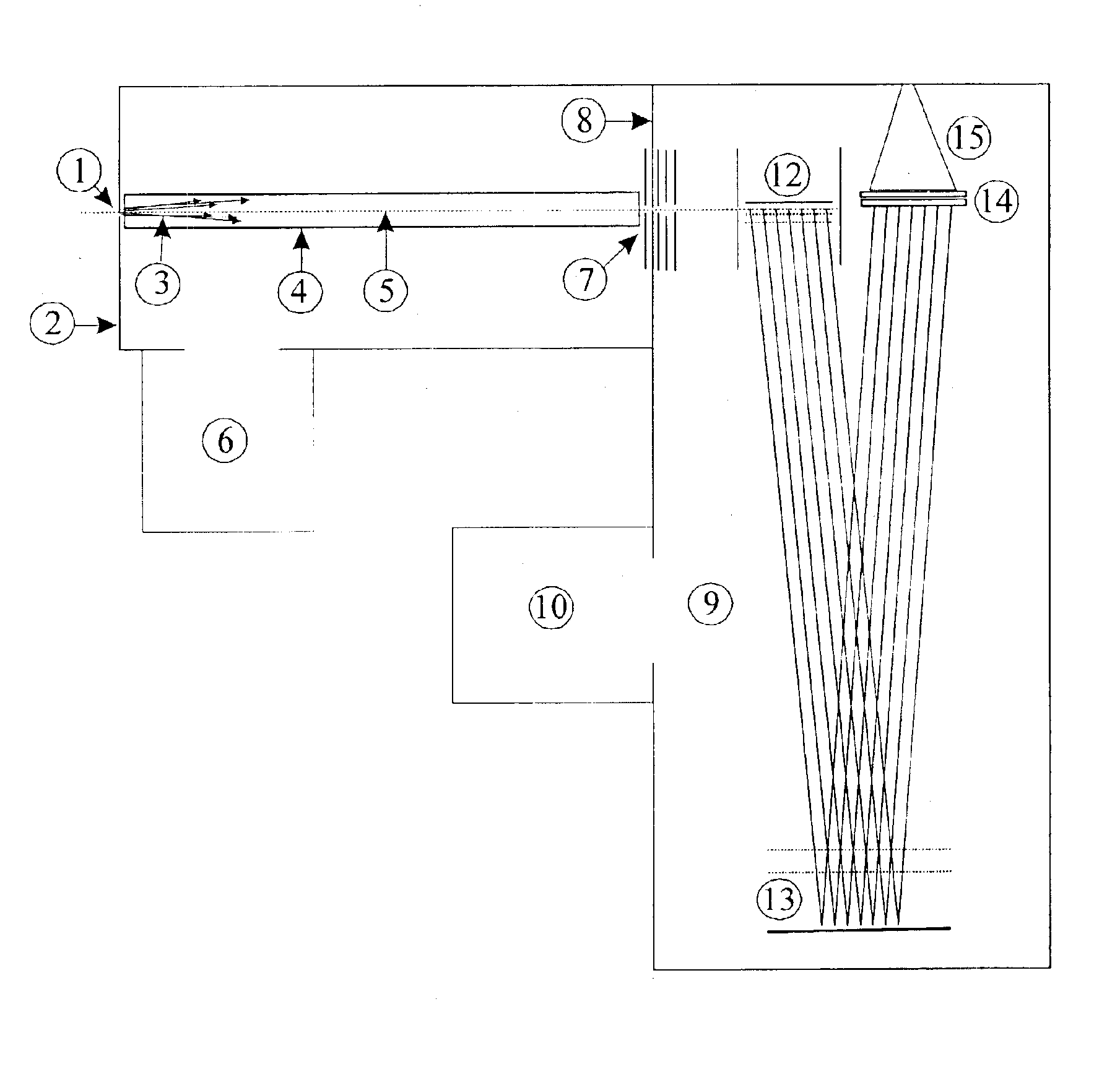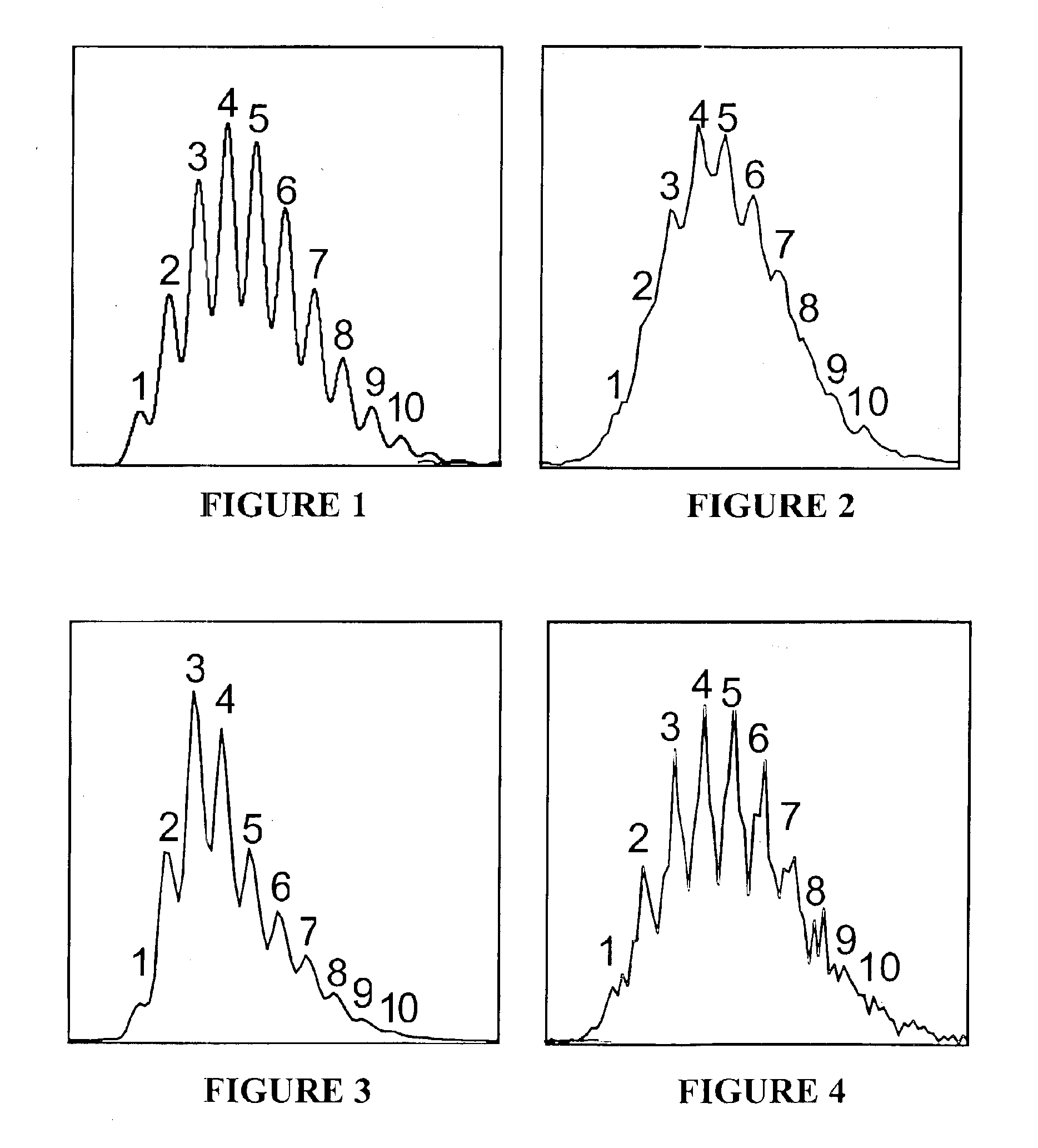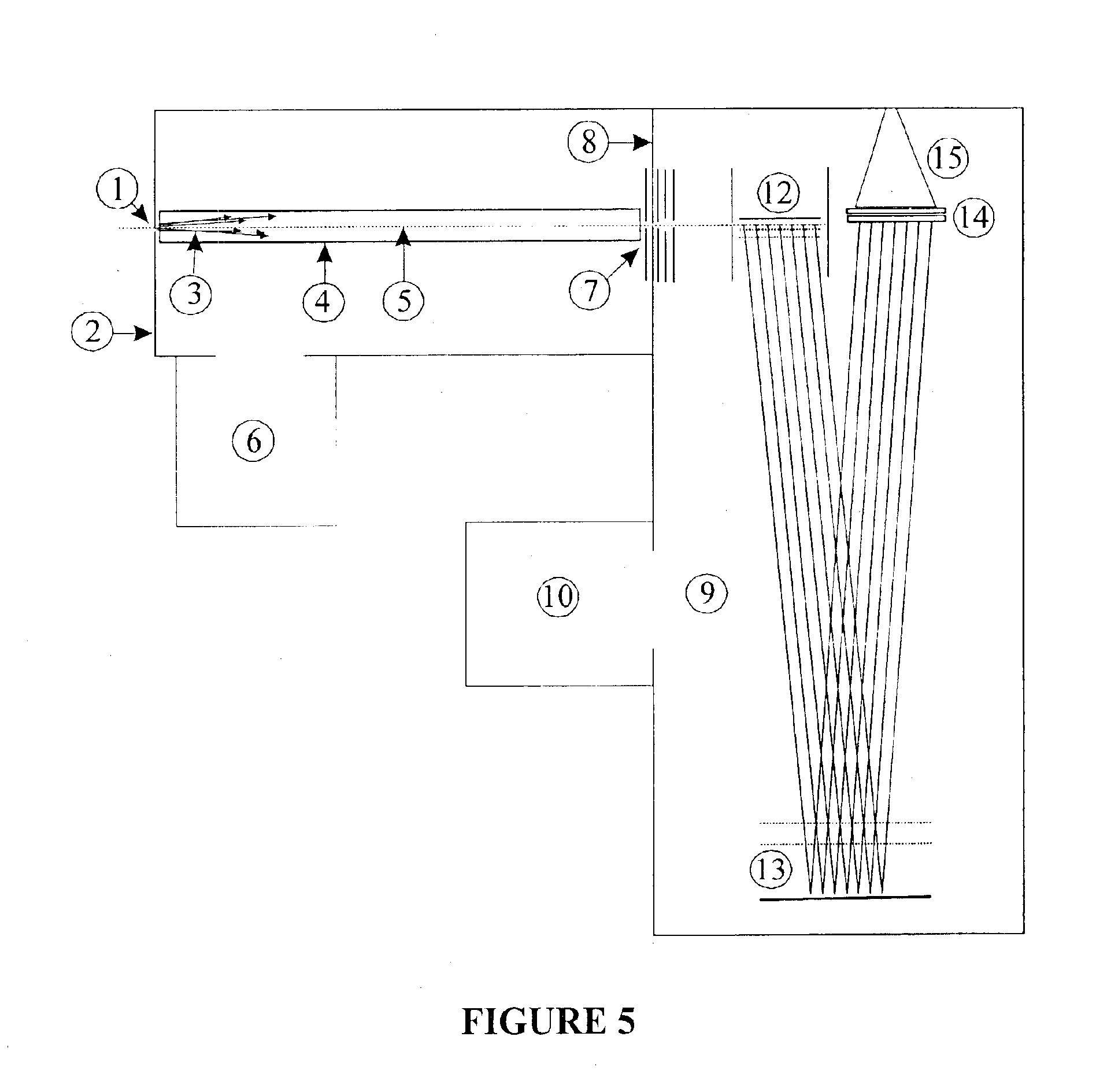High resolution detection for time-of-flight mass spectrometers
a mass spectrometer and high-resolution technology, applied in the direction of electron/ion optical arrangement, particle separator tube details, separation processes, etc., can solve the problems of only meeting the accuracy requirements discussed above, poor evaluation of search, and no longer unambiguous search, so as to improve the resolving power, avoid causing, and prevent noise peaks
- Summary
- Abstract
- Description
- Claims
- Application Information
AI Technical Summary
Benefits of technology
Problems solved by technology
Method used
Image
Examples
Embodiment Construction
First, a description will be given of an embodiment of the method and the equipment which is aimed at achieving the maximum possible resolution. In a time-of-flight mass spectrometer with orthogonal ion injection, as shown in FIG. 5, a pair of high-quality, multi-channel plates is used with a 1.1 nanosecond wide electron avalanche and a transient recorder operating at a digitization rate of 4 GHz for measuring the electron-multiplied ion current. This transient recorder has a special computing network. This computing network examines the individual time-of-flight spectra in real time for the presence of ion peaks, calculates their time of flight and intensity and makes these value pairs available for addition to the intervals of a time-of-flight / intensity histogram. The histogram is realized by means of memory cells in a section of the memory—a memory cell each for each time interval in the histogram. In this example, the time intervals of the histogram are just as long as the clock...
PUM
 Login to View More
Login to View More Abstract
Description
Claims
Application Information
 Login to View More
Login to View More - R&D
- Intellectual Property
- Life Sciences
- Materials
- Tech Scout
- Unparalleled Data Quality
- Higher Quality Content
- 60% Fewer Hallucinations
Browse by: Latest US Patents, China's latest patents, Technical Efficacy Thesaurus, Application Domain, Technology Topic, Popular Technical Reports.
© 2025 PatSnap. All rights reserved.Legal|Privacy policy|Modern Slavery Act Transparency Statement|Sitemap|About US| Contact US: help@patsnap.com



